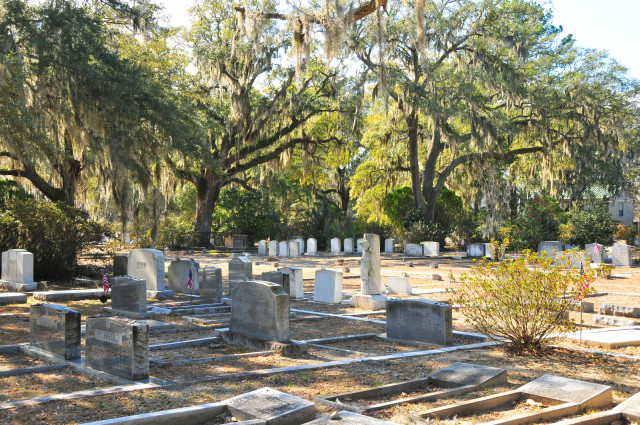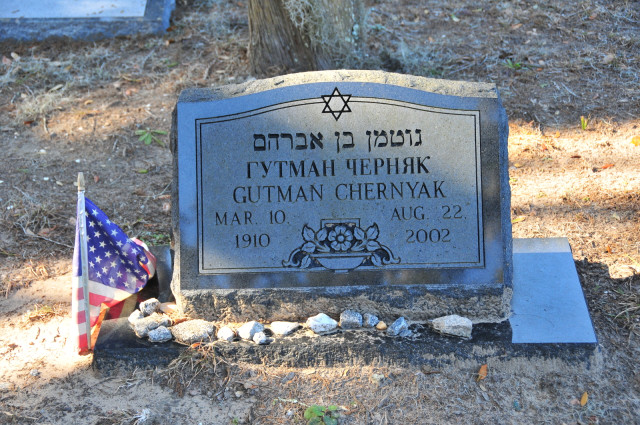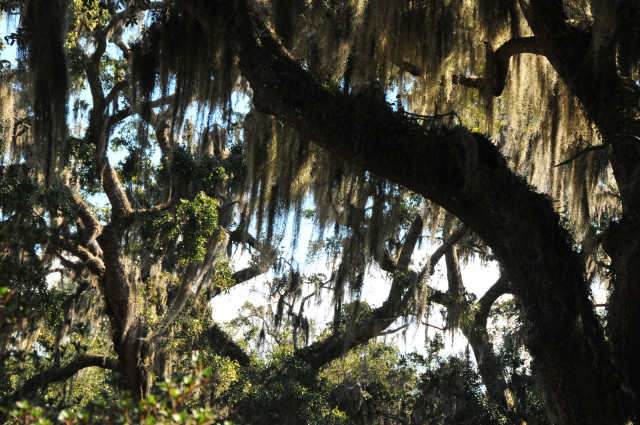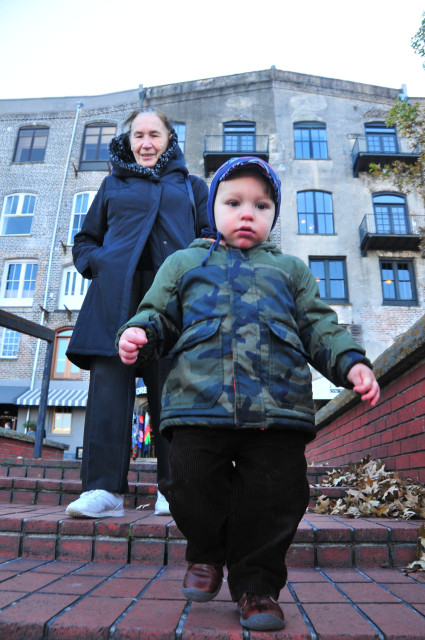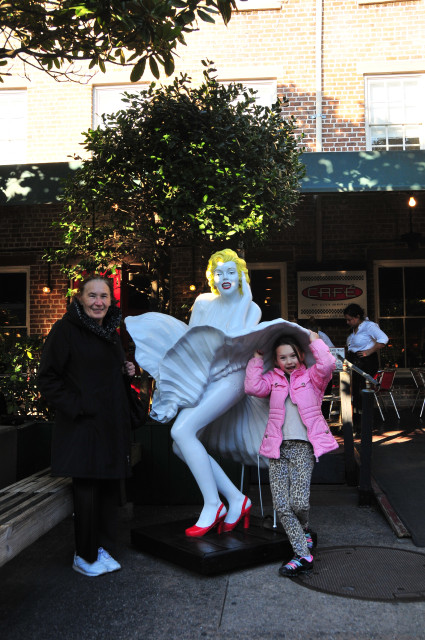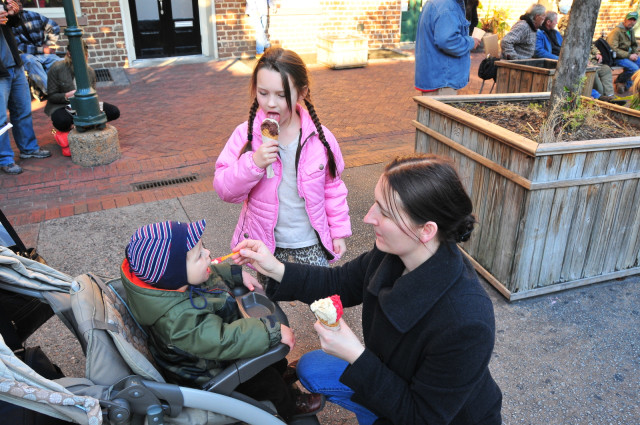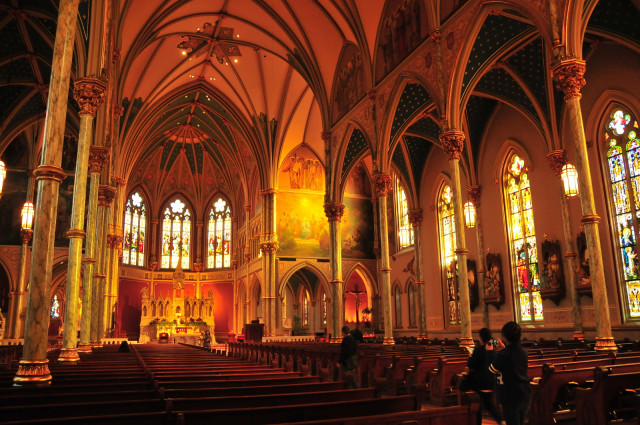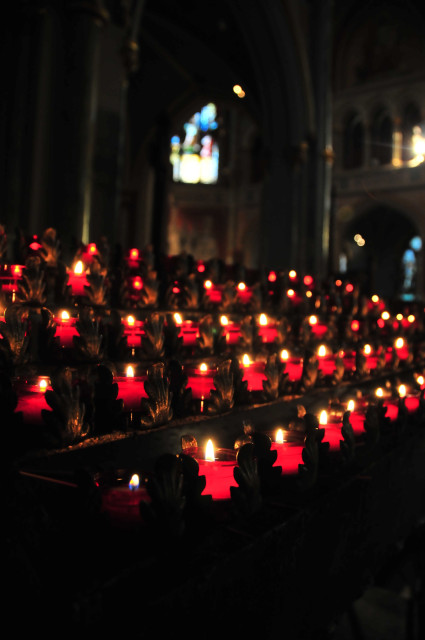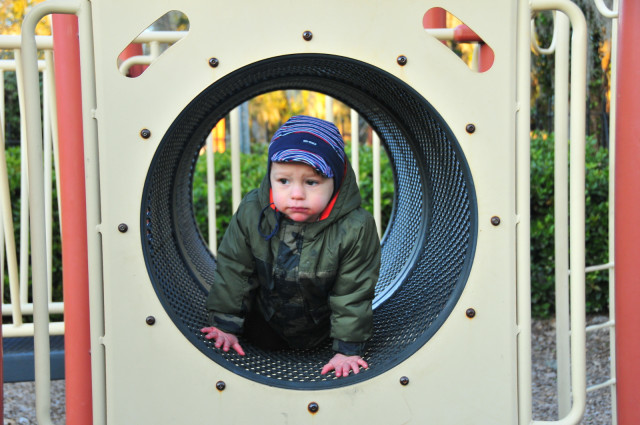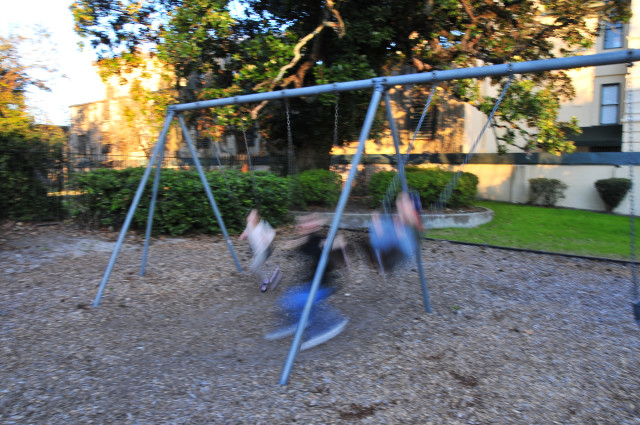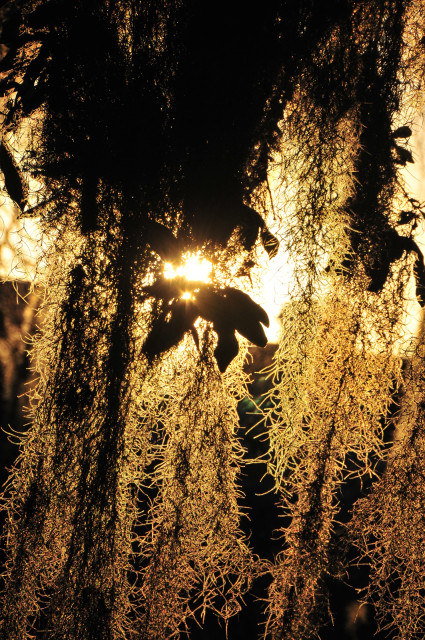A playground next to a cemetery with Revolutionary War era monuments, the monuments worn illegible by centuries of rain and wind, surrounded by live oaks, the playground itself surrounded by magnolias and littered with Spanish Moss, with church bells ringing in the distance — it all seems prototypically southern. E and I spent an hour in such a playground this morning while everyone else was in Mass: the Boy just didn’t want to cooperate, and the lack of a viable way to isolate his fussing (i.e., a crying room) left me with few alternatives. We walked out of the church and within moments found ourselves at a playground beside Colonial Park Cemetery. E climbed and swinged, jumped and slid, and then we went for a short walk along the oyster-shell paved walk of the cemetery.
An ironically unplanned place for E and me to start our second day in Savannah for a number of reasons, not the least of which was the fact that our first site to see was Bonaventure Cemetery, the largest graveyard in the area and likely one of the largest in the south, famous from its staring role in Midnight in the Garden of Good and Evil. The plan was simple: the Boy could sleep, and indeed he drifted off as we drove there, and we would have a chance for a pleasant walk in a lovely cemetery.
Cemeteries always hold surprises, and Bonaventure didn’t disappoint in that regard given the number of Jewish graves with Jewish and even Cyrillic inscriptions. L and I walked about with Babcia, commenting on the typically Jewish surnames we were discovering (Singer, Rosenberg, Goldstein, Cohn) and the tragic-comic nature of so much Jewish literature.
The sunlight filtering through the Spanish Moss hanging on the countless Live Oaks cast a soft hue on everything and made it a perfect place to sit and perhaps read a book or chat about things of real importance, but we had a schedule and, once he woke, a hungry boy, so after Babcia and K triangulated and positioned themselves (it was imperative that Babcia call and ask her now-famous question, “Gdzie jestescie?”), we headed to the historic district for lunch and a walk.
The former was a disaster at the over-price, over-rated Shrimp Factory that seemed to have irony on the menu (my jambalaya had microscopic shrimp that were few and far between) and slow service as the soup of the day. The latter was what could be expected in the most charming little city in the South. A riverside walk, wandering through streetside cafes (why didn’t we eat in one of them?) with various buskers and plastic sculptures (what an odd combination, but there they were, opposite each other), and ice cream shops open in mid-January all soon put us in better spirits. What’s not to love about Savannah, after all? It’s the perfect tourist destination: small, wrapped in history, dotted with countless squares — and high real estate with no jobs for anyone, Babcia and K would add. Perhaps that’s how the locals keep the average tourist from thinking the inevitable: what if we could move here?
As the sun cast increasingly longer shadows and the chill returned to the air, we realized we were back near the church where we’d begun our day. K and Babcia took the kids to the playground where E and I started the day and I headed back to the Cathedral of St. John the Baptist, a church that actually looks, sounds, and feels like a church, with mult-level vaulted ceilings, sculptures of saints, stained glass, an enormous organ, and an echo.
I headed back to the others, played with the kids a bit, and returned to the cemetery, this time with a camera, the sun once again filtering through the Spanish Moss but this time from the opposite direction.
